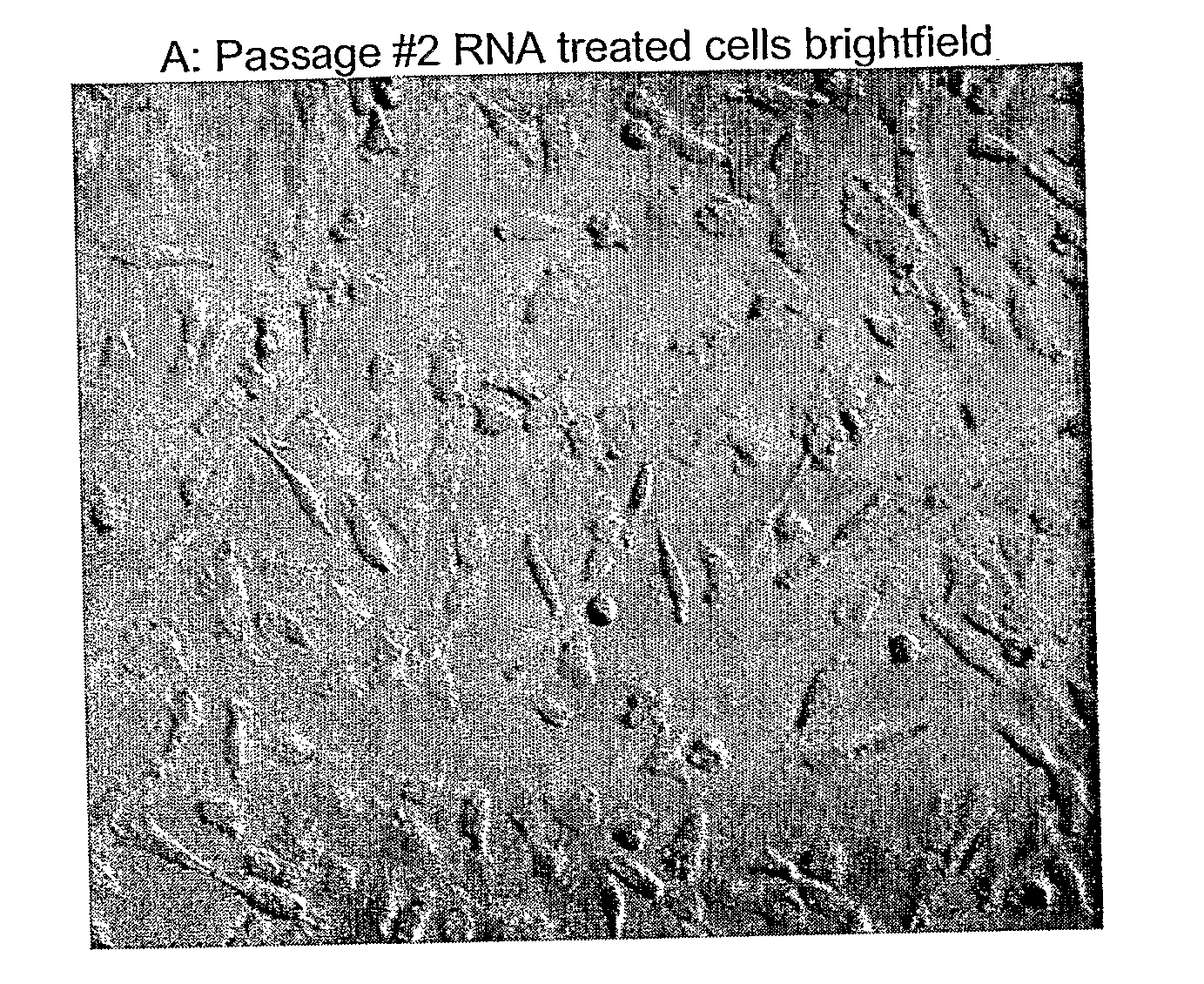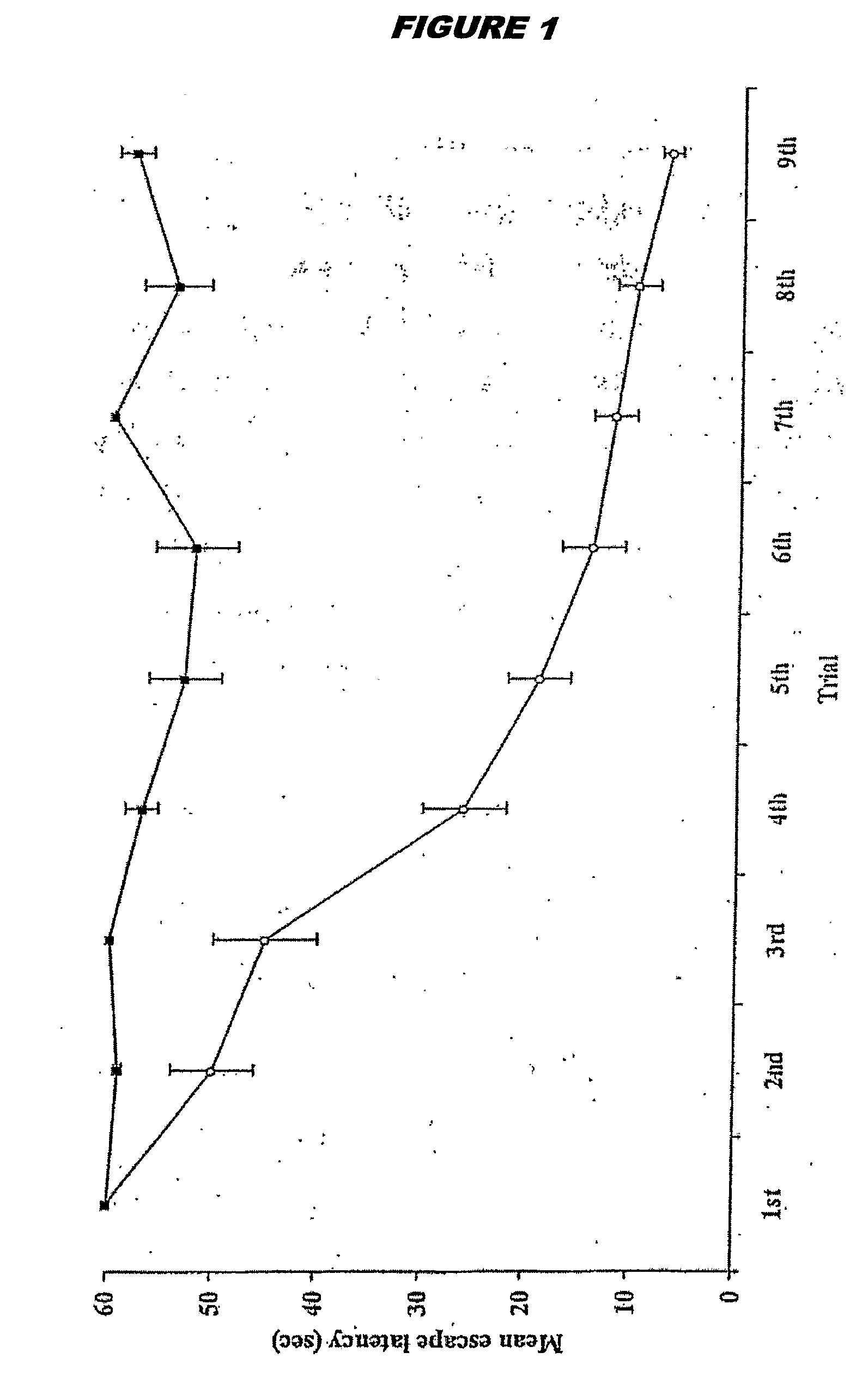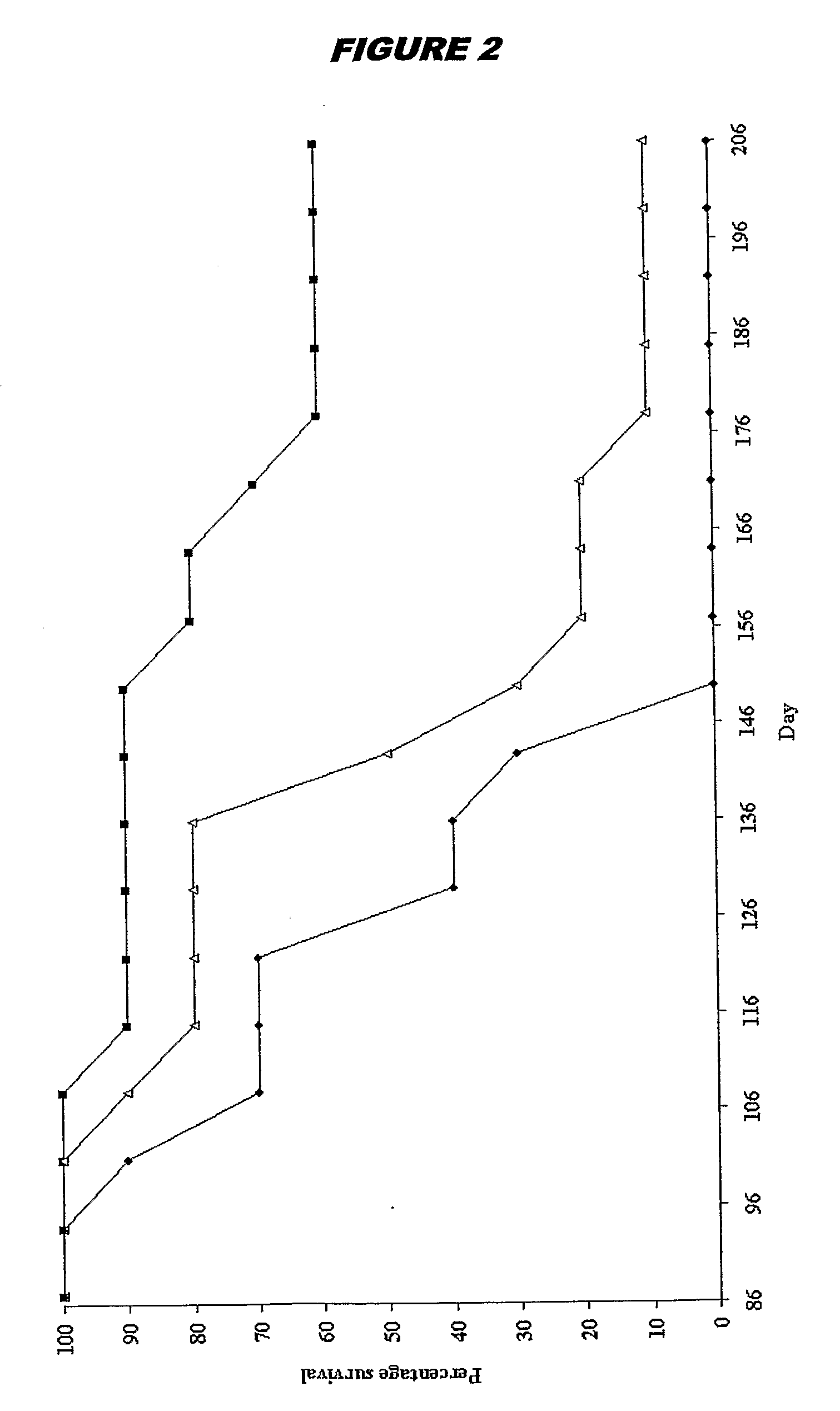Method Of Genotypically Modifying Cells By Administration Of RNA
- Summary
- Abstract
- Description
- Claims
- Application Information
AI Technical Summary
Benefits of technology
Problems solved by technology
Method used
Image
Examples
example 1
Production of Neural and Muscle Cells from Bone Marrow Stromal Stem Cells
Marrow Harvest and Culture.
[0271]Bone marrow stromal (mesenchymal) stem cells were obtained from adult Sprague Dawley rats. The technique is based upon the protocol of Owen and Friedenstein (1988), and represents a typical established adult stem cell source suitable for expansion in vitro. Briefly, after schedule one killing (cervical dislocation), tibia and femora were excised within 5 minutes of death. All connective and muscular tissue was removed from the bones and all further procedures were conducted under sterile conditions.
[0272]Marrow was expelled from the bones by flushing the bones with media (α-MEMS—Gibco Invitrogen Co. UK) containing 10% foetal calf serum, and 1% penicillin / streptomycin. Flushing was achieved by inserting a 25-gauge needle attached to a 5 ml plastic barrel into the neck of the bone (cut at both distal and proximal end) and expelling 2 ml of media through the bone. The media and bon...
example 2
The Effects of Brain RNA Differentiated Stem Cells on Age Related Damage to the Rat Brain, Assessed by Spatial Learning and Memory Performance of Recipient Animals
[0279]Bone marrow mesenchymal stem cells were prepared in vitro as described above in Example 1. When the cells reached confluence, they were exposed to brain RNA (prepared as above) for 12 hours. Donor stem cells were derived from a pigmented rat strain (Lister Hooded). Donor RNA and recipient animals were provided from a different rat strain (Sprague Dawley).
[0280]Recipient Sprague Dawley rats were ex-breeder male rats aged between 468-506 days. It is well established that such animals of advanced age cannot learn to locate a hidden platform in a water maze (Stewart & Morris, 1993; Bagnall & Ray, 2000). Experimental animals received a 0.5 ml intra-venous injection of brain RNA treated stem cells, equating to the product of one six well plate of brain RNA treated cells. Control animals received an equivalent amount of unt...
example 3
The Effects of RNA Extracted from GFP Expressing Mouse Brain on Wild Type Rat Bone Marrow Mesenchymal Stem Cells
[0284]Bone marrow mesenchymal stem cells were prepared in vitro as described above in Example 1.
[0285]Brain homogenate was prepared and RNA separated by commercial RNA separation kit or standard phenol based procedures. In the initial experiment, RNA was prepared by a cold phenol extraction method (Kirby). Brains were dissected from eight freshly killed GFP-expressing adult mice. Brains, excluding the cerebellum were weighed and 5 ml of phosphate buffered saline (PBS) added per gram of tissue. The mixture was homogenised in a glass teflon homogeniser for approximately 4 minutes. An equal volume of 95%-saturated phenol was added. The resultant solution was left at room temperature for 15 minutes then centrifuged at 18,000 rpm in an ultra centrifuge for 30 minutes. The aqueous phase was retained and brought to a concentration of 0.1M MgCl by the addition of 1M MgCl. Two volu...
PUM
| Property | Measurement | Unit |
|---|---|---|
| Composition | aaaaa | aaaaa |
Abstract
Description
Claims
Application Information
 Login to View More
Login to View More - R&D
- Intellectual Property
- Life Sciences
- Materials
- Tech Scout
- Unparalleled Data Quality
- Higher Quality Content
- 60% Fewer Hallucinations
Browse by: Latest US Patents, China's latest patents, Technical Efficacy Thesaurus, Application Domain, Technology Topic, Popular Technical Reports.
© 2025 PatSnap. All rights reserved.Legal|Privacy policy|Modern Slavery Act Transparency Statement|Sitemap|About US| Contact US: help@patsnap.com



